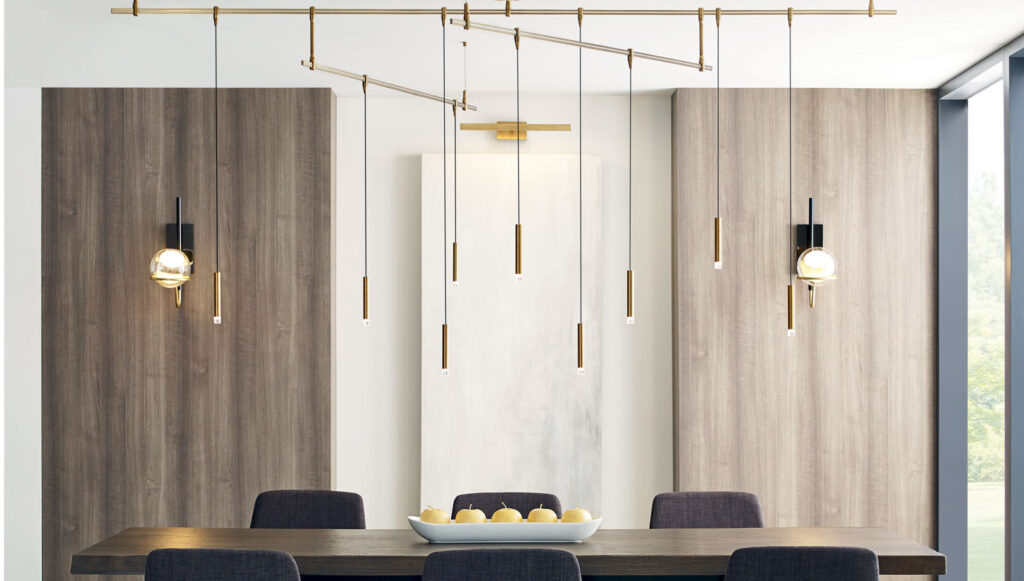Visual comfort refers to the quality of the visual environment that allows individuals to see clearly and comfortably without causing eye strain or discomfort. It is a crucial consideration in interior design, architecture, and lighting design, as it affects not only our ability to perform tasks but also our overall well-being. Proper visual comfort enhances productivity, reduces stress, and improves the quality of life by optimizing lighting, reducing glare, balancing contrast, and ensuring a harmonious environment. This article explores the key elements of visual comfort, factors that influence it, and practical strategies for creating visually comfortable spaces.
What is Visual Comfort?
Visual comfort is achieved when the lighting conditions of a space support the visual needs of its occupants. This includes factors such as the intensity of light, its distribution, the balance of brightness, the prevention of glare, and the appropriate use of color. When these factors are properly managed, the result is a visual environment that minimizes strain on the eyes, promotes easy focus, and enhances overall comfort.
In essence, visual comfort is about providing an optimal balance of light that supports daily activities without causing physical discomfort or visual fatigue. It allows people to perform tasks efficiently, whether it’s working on a computer, reading a book, or simply moving through a space.
Key Factors That Affect Visual Comfort
- Lighting Intensity: The brightness level of a space is one of the most important elements for visual comfort. Too little light can lead to squinting, straining, and reduced visibility, while too much light can cause glare and discomfort. The right intensity depends on the type of task being performed and the size of the space.
- Glare: Glare is the harsh, uncomfortable light that creates high contrast between light and dark areas. It can be caused by direct light sources like windows, lamps, or the sun, and it disrupts the visual field. Glare can be uncomfortable and harmful, especially in environments where people are required to focus for extended periods.
- Color Temperature: Color temperature refers to the warmth or coolness of light, typically measured in Kelvin (K). Warm light (below 3000K) creates a cozy, relaxed atmosphere and is ideal for living spaces, while cool light (above 5000K) is better suited for workspaces and environments requiring high concentration. The correct color temperature helps regulate mood and productivity, making it an important factor in achieving visual comfort.
- Color Contrast: The contrast between objects and their backgrounds plays a major role in visual comfort. High contrast, such as black text on a white background, makes reading easier, while low contrast can make text hard to read and strain the eyes. Proper contrast improves legibility and reduces eye fatigue.
- Daylight: Natural light is considered the best source for visual comfort. It provides a broad spectrum of colors and is more dynamic than artificial lighting. Proper use of daylight, combined with artificial light, can enhance visual comfort by reducing the need for excessive artificial lighting, regulating circadian rhythms, and boosting mood.
- Lighting Uniformity: Uneven lighting, or “hot spots,” can lead to discomfort and fatigue. Uniform lighting ensures that all areas of a space receive consistent light, reducing the potential for glare and shadows. This is particularly important in environments like offices or classrooms, where attention to detail and visual focus are necessary.
The Impact of Poor Visual Comfort
Poor lighting and a lack of visual comfort can have numerous negative effects on both health and productivity. Common issues include:
- Eye Strain: Insufficient or excessive lighting can lead to eye fatigue, irritation, and dryness. This is especially common when working on computers or reading in low light conditions.
- Headaches: Glare and high-intensity lighting can trigger headaches and migraines, making it difficult to focus or work for extended periods.
- Reduced Productivity: In workplaces or educational environments, poor visual comfort can impair concentration, leading to slower task completion and reduced efficiency.
- Negative Impact on Mood: Dim, gloomy lighting or overly bright environments can negatively affect mood, making people feel tired, sluggish, or stressed. In contrast, well-lit spaces with balanced light promote energy and alertness.
Frequently Asked Questions (FAQs) About Visual Comfort
1. How can I reduce glare in my home or office?
Reducing glare in a space is essential for achieving visual comfort. Here are some practical tips:
- Use diffused lighting: Instead of using harsh, direct light sources, opt for light fixtures that diffuse the light, such as frosted bulbs or pendant lights with fabric shades.
- Adjust window treatments: Use blinds, curtains, or window films to control the amount of daylight entering a room. This can reduce direct sunlight and prevent glare on screens and surfaces.
- Use task lighting: For focused tasks, such as reading or working on a computer, consider using task lighting like desk lamps, which provide directed light without causing glare.
- Consider anti-glare screens: For computer screens or televisions, using an anti-glare screen protector can reduce the intensity of light hitting your eyes.
2. What is the ideal lighting level for different activities?
The ideal lighting level depends on the type of activity being performed:
- General ambient lighting: In living rooms or bedrooms, the general lighting level should range from 100 to 300 lux (a unit of illuminance). This provides a comfortable atmosphere for daily activities.
- Reading or detailed work: For tasks such as reading, writing, or detailed work, lighting levels should be between 500 and 1000 lux to ensure clarity and reduce eye strain.
- Offices and workplaces: In office environments, lighting levels of around 300 to 500 lux are ideal for general work tasks. More specific lighting may be necessary for areas with complex tasks, such as design work or data entry.
3. How can I incorporate natural light into my space?
Maximizing natural light in a space can significantly improve visual comfort and energy efficiency. Here are some ways to incorporate daylight:
- Position workspaces near windows: Place desks or workstations near windows to allow natural light to flood the space.
- Use light-colored walls and surfaces: Light-colored walls, ceilings, and furniture help reflect natural light deeper into a room, reducing the need for artificial lighting.
- Install skylights: Skylights or light tubes can bring natural light into rooms with limited window access, such as interior rooms or bathrooms.
- Use sheer curtains or blinds: To reduce glare while still allowing natural light to enter, opt for sheer curtains or adjustable blinds.
4. Can the color of light affect my mood or productivity?
Yes, color temperature plays a crucial role in influencing mood and productivity. The color of light can have a significant psychological impact:
- Warm light (below 3000K): Creates a relaxing and cozy atmosphere, making it suitable for living rooms, bedrooms, and dining areas.
- Cool light (above 5000K): Promotes alertness and concentration, making it ideal for workspaces, kitchens, and study areas.
- Neutral white light (around 4000K): Provides a balanced and comfortable light for general living spaces and workplaces.
5. How can I improve visual comfort in my workplace?
In workplace environments, visual comfort is key to maintaining productivity and reducing fatigue. Here are some strategies:
- Layered lighting: Use a combination of ambient, task, and accent lighting to create a flexible lighting environment. Task lighting, such as desk lamps, should be adjustable to suit individual preferences.
- Control glare: Use anti-glare screens for computer monitors and position desks so that workers are not facing direct sunlight. Blinds or shades can help regulate the amount of daylight entering the room.
- Adjustable lighting: Allow employees to adjust lighting levels to meet their personal needs, particularly in open-plan offices where ambient lighting may not be ideal for everyone.
- Provide regular breaks: Encourage employees to take regular breaks from screens and move around to reduce visual fatigue and strain.
Conclusion
Visual comfort is a critical aspect of creating environments that promote well-being, productivity, and overall comfort. By understanding and controlling factors such as lighting intensity, glare, color temperature, and contrast, you can design spaces that enhance visual comfort and minimize the strain on the eyes. Whether at home, in the office, or in educational settings, optimizing visual comfort can lead to improved mood, better focus, and a healthier environment for all occupants.





